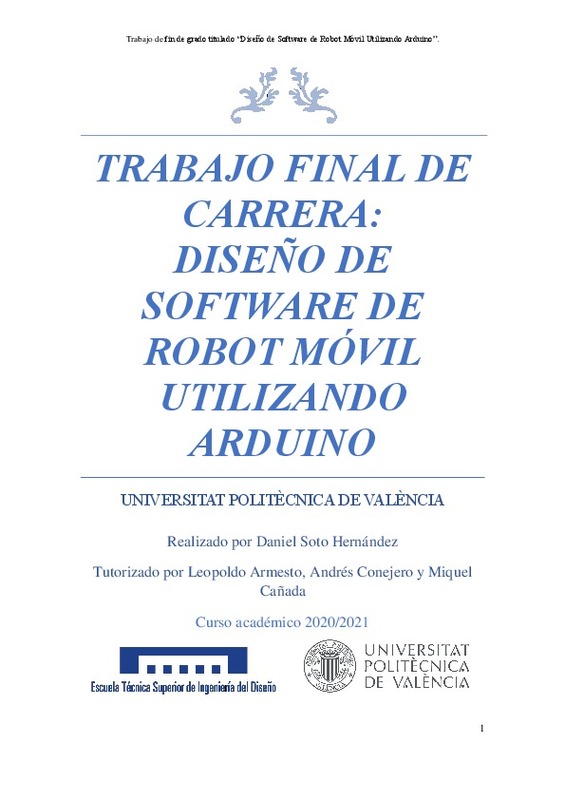|
Resumen:
|
[ES] el diseño de un robot móvil de cuatro ruedas, con configuración diferencial, construido a partir de electrónica económica accesible para todo el mundo sobre una estructura dada por terceros, con el fin de ser un ...[+]
[ES] el diseño de un robot móvil de cuatro ruedas, con configuración diferencial, construido a partir de electrónica económica accesible para todo el mundo sobre una estructura dada por terceros, con el fin de ser un prototipo que simulara un producto comercial, con una carcasa que dejaría inaccesible la electrónica en su interior.
Dentro de las funcionalidades a realizar se encuentra el modo sigue-líneas, un modo autónomo evita obstáculos, la posibilidad de controlar las matrices leds que constituyen sus ojos y un control remoto manual.
Para ello se ha planteado una estrategia que engloba y relaciona tres puntos clave que componen el robot:
Software, en la parte de la App para el móvil con el que podremos manejar el robot de forma inalámbrica utilizando Bluetooth, donde se han implementado diferentes menús de control, uno para cada funcionalidad del robot, con un planteamiento muy intuitivo.
Firmware, programando el microcontrolador que compone el cerebro del robot a través de Arduino, éste será el encargado de controlar todos los sensores y actuadores que componen al robot (servomotores, matrices de leds, ultrasonidos, etc.), crear un servicio Bluetooth capaz de conectar con un smartphone y gestionar el flujo de comandos y algoritmos necesarios para cumplir con las funcionalidades
Hardware, en el seleccionado de componentes, testeo y conexionado, además de la colaboración en el ajuste de detalles del diseño planteado.
[-]
[EN] the design of a four-wheel mobile robot, with differential configuration, built from economical electronics accessible to everyone on a structure given by third parties, in order to be a prototype that simulates a ...[+]
[EN] the design of a four-wheel mobile robot, with differential configuration, built from economical electronics accessible to everyone on a structure given by third parties, in order to be a prototype that simulates a commercial product, with a casing that would leave inaccessible electronics inside.
Among the functionalities to be carried out is the line-tracker mode, an autonomous mode avoids obstacles, the possibility of controlling the LED matrices that make up its eyes and a manual remote control.
For this, a strategy has been proposed that encompasses and relates three key points that make up the robot:
Software, in the part of the mobile App with which we can operate the robot wirelessly using Bluetooth, where different control menus have been implemented, one for each robot function, with a very intuitive approach.
Firmware, programming the microcontroller that makes up the robot's brain through Arduino, this will be in charge of controlling all the sensors and actuators that make up the robot (servo motors, led arrays, ultrasound, etc.), creating a Bluetooth service capable of connect with a smartphone and manage the flow of commands and algorithms necessary to fulfill the functionalities
Hardware, in the selection of components, testing and connection, in addition to the collaboration in the adjustment of details of the proposed design.
[-]
|







